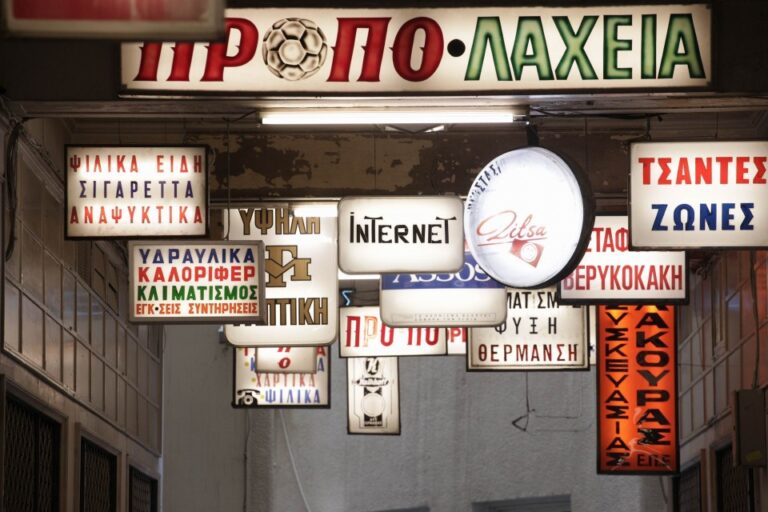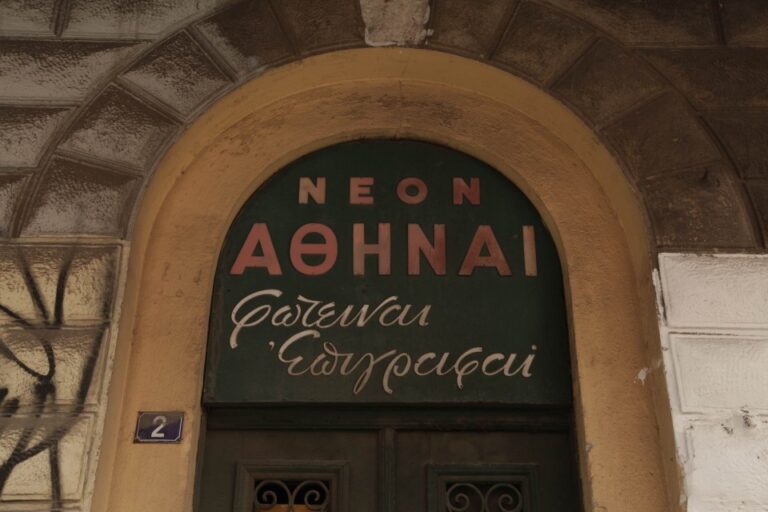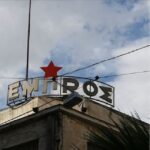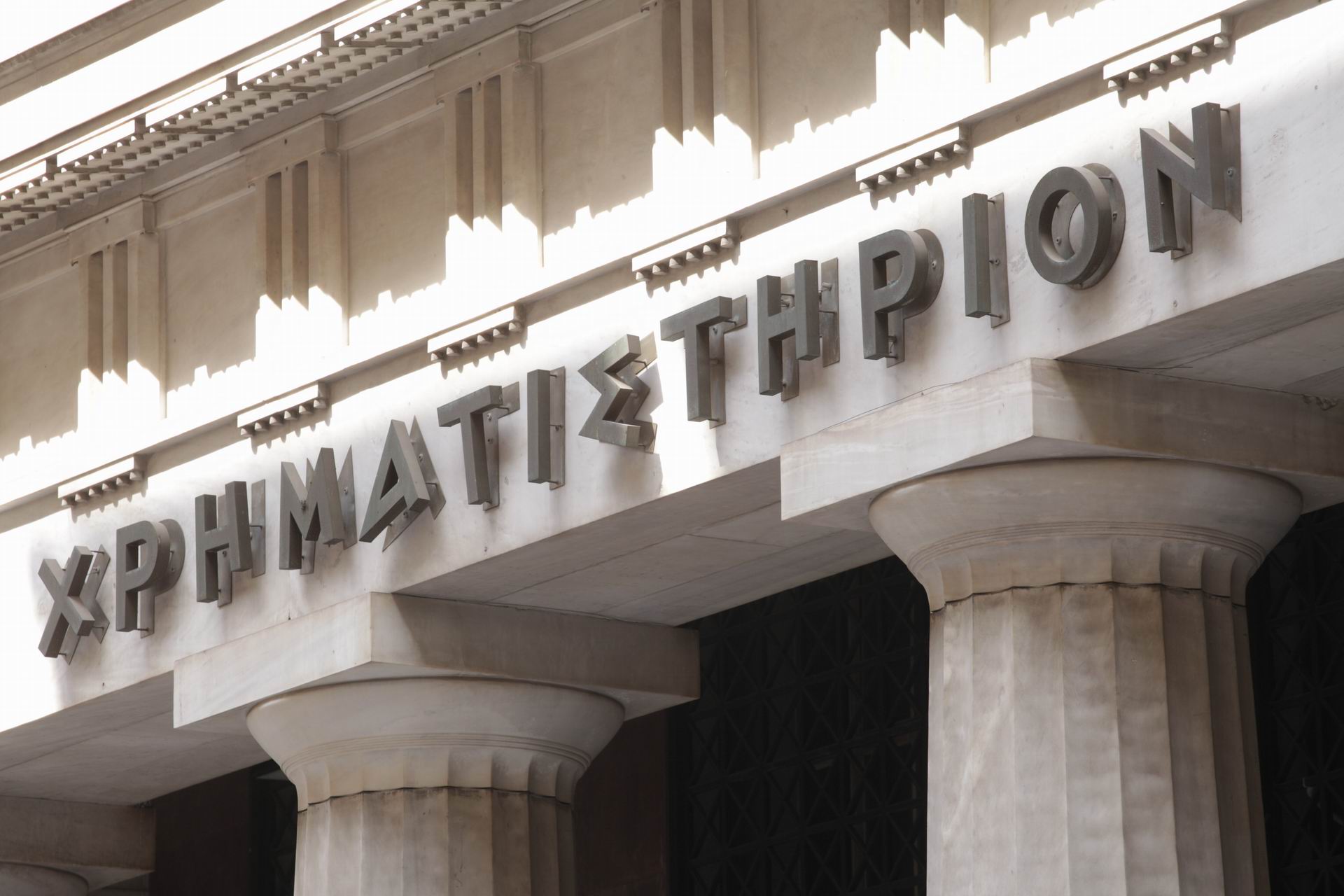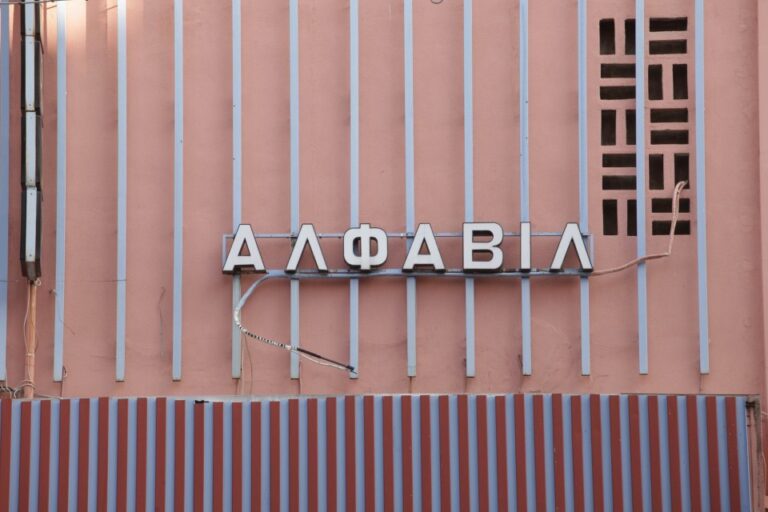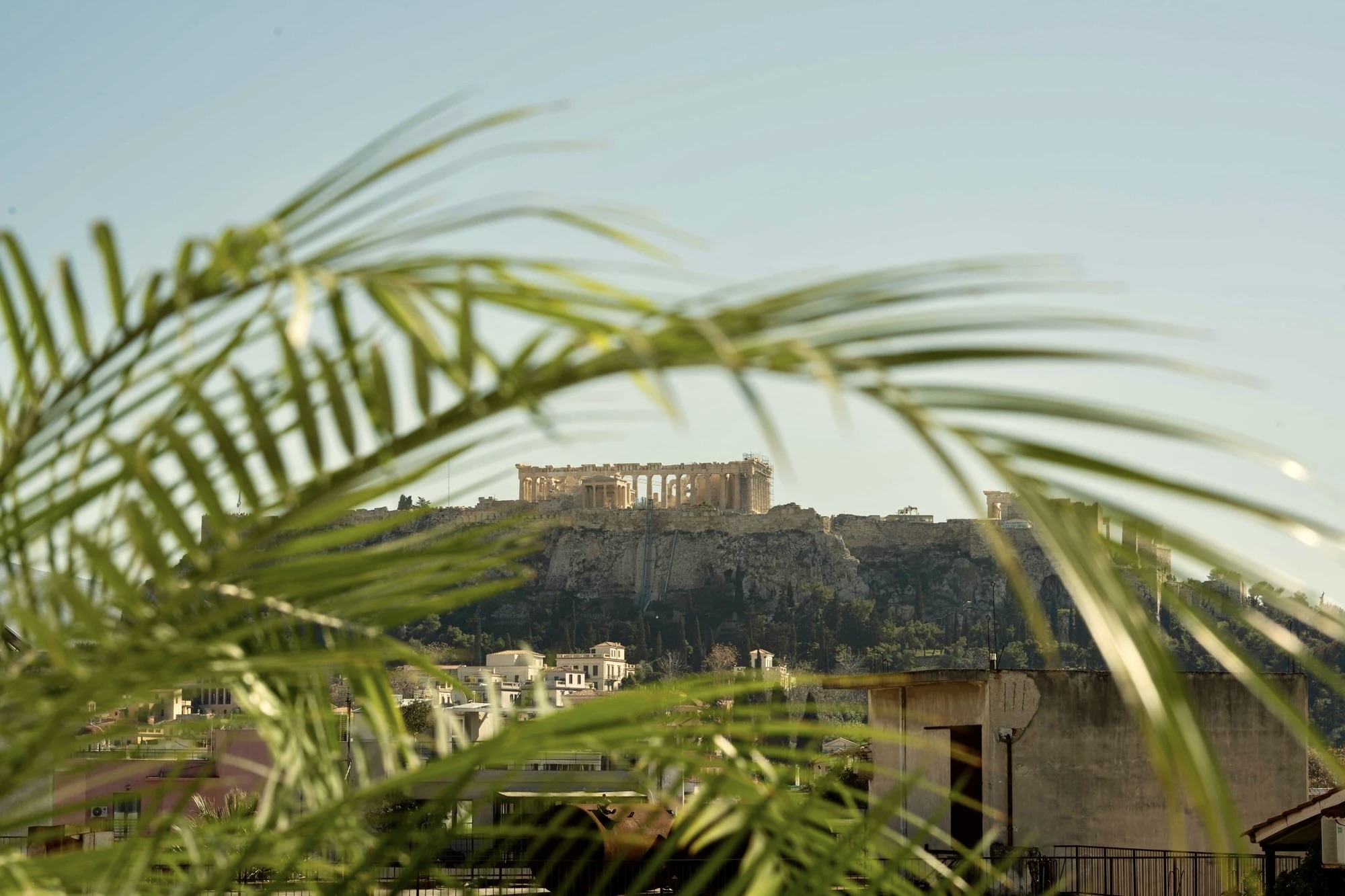We come across them all the time. Even dozens of times in the very same day. We do not pay much of attention to their shape or colour. And yet, through them, we learn a lot about the history of our country. Placards and signs are part of our culture. Panos Vassiliou, the founder of Parachute Typefoundry, a company that designs typographic products such as typefaces, by virtue of his professional status, is not one to brush past a sign.
“Typography is everywhere in our lives. You see typographic creations on paper, on walls, even on everyday objects and commodities or as part a building’s decoration. A proper font is aesthetically pleasing and, at the same time, as powerful as the copy of the sign or advertisement”, he says while speaking to Travel.gr.
Mr Vassiliou was head of the project “The type that shapes my city – This is Athens”, a documentary that unfolds the typographic history of the capital, which was presented at the international conference “Type Drives Communities” held on 7 and 8 May.
“We wanted to showcase the city’s typographic history through a different medium. I think that the end result is truly interesting, whether one is familiar with the subject or not”, he notes. “Each generation tries to erase the work of the previous one and write its own history”, say the creators of the documentary.
Ancient Greece and Byzantium
The choice of a “family” of typographic elements is made for historical reasons. For inscriptions on public buildings the “ancient Greek” characters were chosen by the state. The Church preferred the “Byzantine” fonts for its temples and institutions. As graphic designer Vassilis Georgiou explains in the documentary, “Both choices carry political connotations. The state sought to be associated with the ancient Greek “κάλλος” (meaning beauty), the church with the glory of the Byzantine Empire”. What’s interesting is that the capital, equally thick, ancient Greek letters are not only found on government buildings, but also on signs of small businesses such as butchers and pharmacies.
Handwritten Calligraphy
Most of us have noticed them, especially on the signs of old businesses in the historic centre, but also on old advertisements, movie posters, product packaging. Calligraphy fonts are probably the greatest Greek peculiarity.
“We owe their abundance to the fact that there were no standard calligraphic fonts on the market in the past. So each artist created their own individual style. This eventually led to a great variety, which constitutes a source of inspiration for today’s typographers”, says Mr Vassiliou. In his case, his favourite fonts –found in various parts of the city- are the grotesque ones (belonging to the font “family” most of us know as “Sans Serif”). “They match the current city image and are constantly evolving”, he adds. Interestingly, the early gothic “Futura” font–seen on many buildings in the city- were among the first in the world. In Germany they appeared for the first time in 1927 and by the early 1930s similar fonts were already present in Athens.
Athens –a hub for designers and graffiti artists
For various reasons, Greece has not been a pioneer in the typography sector in the past, but in recent years things are changing. “Throughout the decade of crisis there were people who maintained an open mind and managed to make a name for themselves in their field abroad. As a result, Athens has now become a hub for designers and digital nomads from all over the world,” says Mr Vassiliou. Besides, it is this “delay” that lends colour to the city.
“The peculiarity of Athens is that it is much less “typographically uniform” than the big cities of Europe. Mass brands do not dominate. Instead, there are thousands of small business signs and oodles of fonts. Wandering the streets of Athens, one may see a modern sign next to a more traditional one next to a poster next to a graffiti. I think that the “visual future” of Athens will be very interesting”, concludes Mr Vassiliou. And he is probably right.
Apart from commercial typography, in recent years Athens also attracts graffiti artists, who’ve settled here permanently. “Athens is a famous attraction for graffiti tourism. Athens reminds artists from France or Germany what Paris or Berlin was like a decade ago,” says graffiti artist RTMONE in the documentary.
A long walk through the neighbourhoods of Psirri and Exarchia can prove it.
Watch the full documentary here



